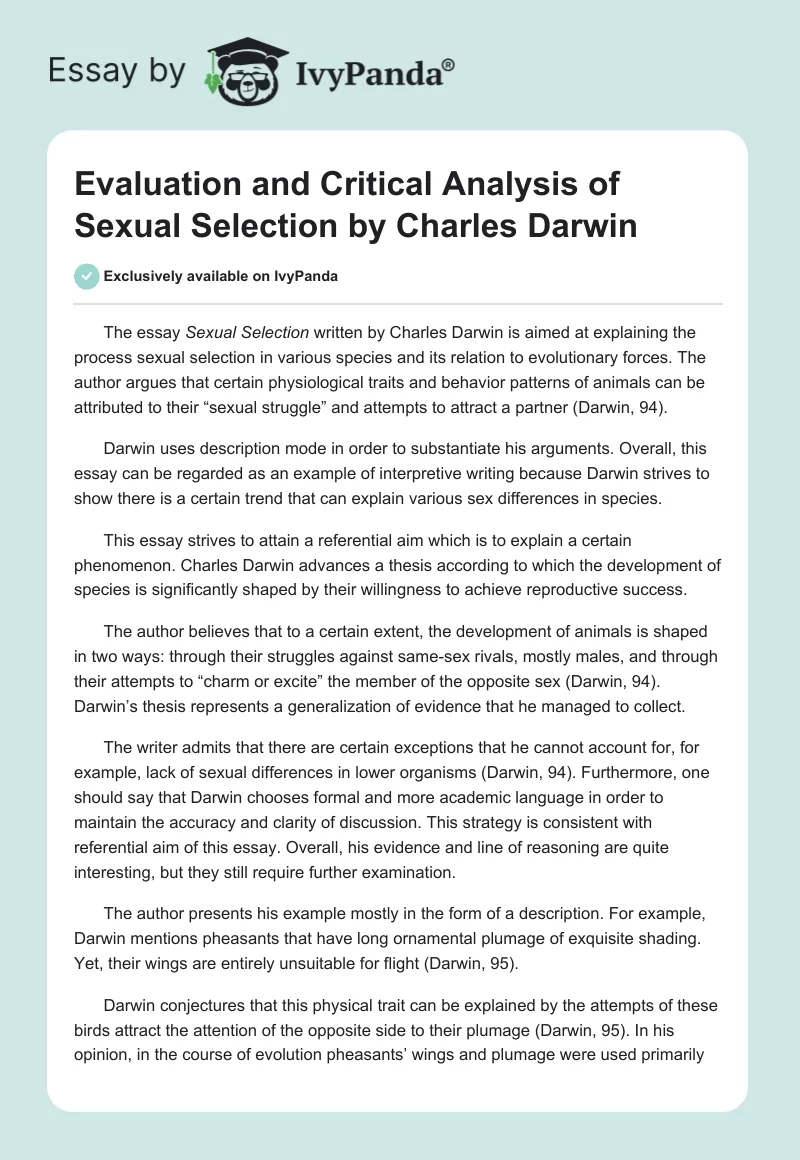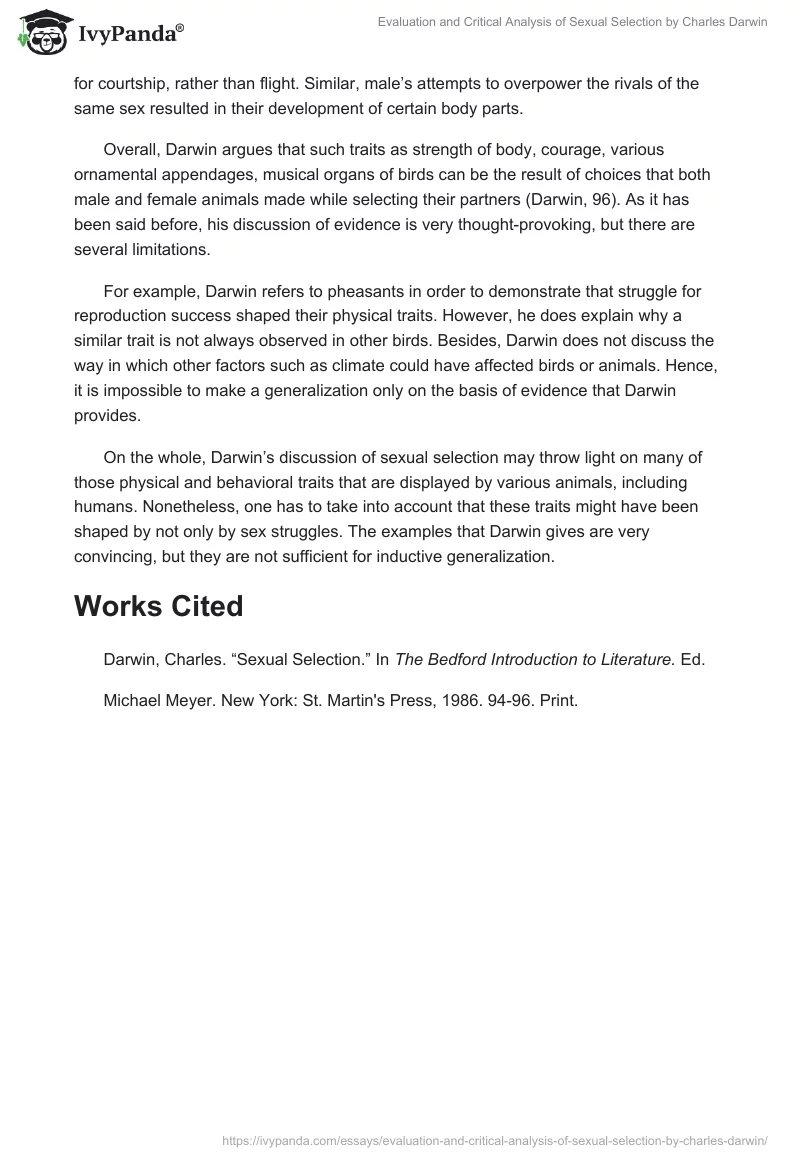The essay Sexual Selection written by Charles Darwin is aimed at explaining the process sexual selection in various species and its relation to evolutionary forces. The author argues that certain physiological traits and behavior patterns of animals can be attributed to their “sexual struggle” and attempts to attract a partner (Darwin, 94).
Darwin uses description mode in order to substantiate his arguments. Overall, this essay can be regarded as an example of interpretive writing because Darwin strives to show there is a certain trend that can explain various sex differences in species.
This essay strives to attain a referential aim which is to explain a certain phenomenon. Charles Darwin advances a thesis according to which the development of species is significantly shaped by their willingness to achieve reproductive success.
The author believes that to a certain extent, the development of animals is shaped in two ways: through their struggles against same-sex rivals, mostly males, and through their attempts to “charm or excite” the member of the opposite sex (Darwin, 94). Darwin’s thesis represents a generalization of evidence that he managed to collect.
The writer admits that there are certain exceptions that he cannot account for, for example, lack of sexual differences in lower organisms (Darwin, 94). Furthermore, one should say that Darwin chooses formal and more academic language in order to maintain the accuracy and clarity of discussion. This strategy is consistent with referential aim of this essay. Overall, his evidence and line of reasoning are quite interesting, but they still require further examination.
The author presents his example mostly in the form of a description. For example, Darwin mentions pheasants that have long ornamental plumage of exquisite shading. Yet, their wings are entirely unsuitable for flight (Darwin, 95).
Darwin conjectures that this physical trait can be explained by the attempts of these birds attract the attention of the opposite side to their plumage (Darwin, 95). In his opinion, in the course of evolution pheasants’ wings and plumage were used primarily for courtship, rather than flight. Similar, male’s attempts to overpower the rivals of the same sex resulted in their development of certain body parts.
Overall, Darwin argues that such traits as strength of body, courage, various ornamental appendages, musical organs of birds can be the result of choices that both male and female animals made while selecting their partners (Darwin, 96). As it has been said before, his discussion of evidence is very thought-provoking, but there are several limitations.
For example, Darwin refers to pheasants in order to demonstrate that struggle for reproduction success shaped their physical traits. However, he does explain why a similar trait is not always observed in other birds. Besides, Darwin does not discuss the way in which other factors such as climate could have affected birds or animals. Hence, it is impossible to make a generalization only on the basis of evidence that Darwin provides.
On the whole, Darwin’s discussion of sexual selection may throw light on many of those physical and behavioral traits that are displayed by various animals, including humans. Nonetheless, one has to take into account that these traits might have been shaped by not only by sex struggles. The examples that Darwin gives are very convincing, but they are not sufficient for inductive generalization.
Works Cited
Darwin, Charles. “Sexual Selection.” In The Bedford Introduction to Literature. Ed.
Michael Meyer. New York: St. Martin’s Press, 1986. 94-96. Print.


